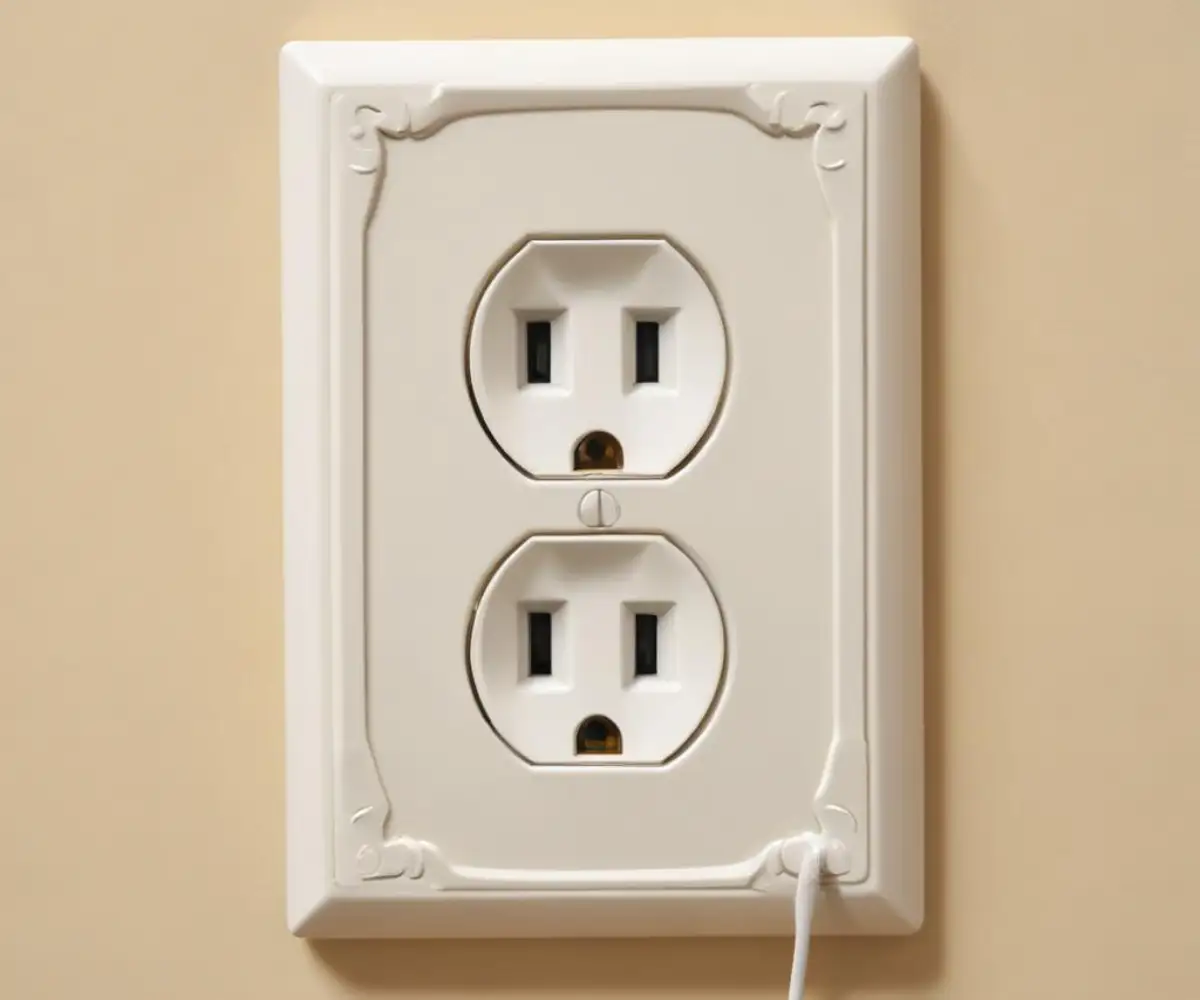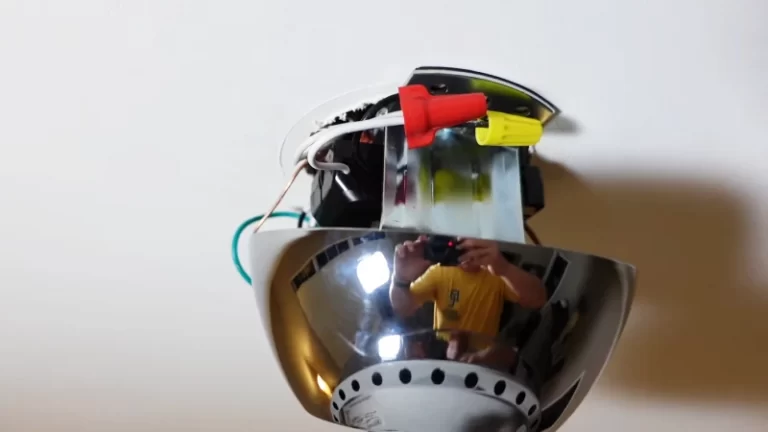Bent Outlet Covers? Unmasking the Hidden Dangers in Your Walls
You walk past it every day, but one morning you notice something odd. The flat, unassuming plastic cover on your electrical outlet is no longer flat. It’s bending, bulging, or warping outwards from the wall. While it’s easy to dismiss this as a minor cosmetic flaw, that bent outlet cover could be a silent alarm, signaling a much more serious and dangerous problem lurking within your walls.
Ignoring a warped outlet cover is a risk you shouldn’t take. It’s often the only visible symptom of underlying issues that range from improper installation to severe electrical hazards. This guide will walk you through the common causes of bending outlet covers and provide a clear, actionable plan to diagnose and fix the problem, ensuring your home remains safe.
You'll Learn About
Why You Can’t Ignore a Bending Outlet Cover
A bent outlet cover is more than just an eyesore; it’s a critical warning sign. The plastic is bending for a reason, and that reason often involves excess heat, physical stress, or electrical faults. These conditions can create a serious risk of electrical shock or, in the worst-case scenario, a house fire.
Think of the cover as the face of your electrical system. It protects the live wiring from accidental contact and contains any potential sparks. When it’s compromised, that barrier is weakened, leaving your home and family vulnerable. Addressing the issue promptly is essential for maintaining a safe environment.
The Common Culprits: Uncovering Why Outlet Covers Bend
Several distinct issues can cause your outlet covers to warp or bend. Understanding the root cause is the first step toward implementing the correct and safe solution. Let’s break down the most frequent offenders.
Cause 1: Dangerous Heat Buildup from Overloaded Circuits or Faulty Wiring
This is the most dangerous cause. Plastic bends when it gets hot, and significant heat from an electrical outlet is a major red flag. This heat is typically generated by a problem with the electrical current. One common source is an overloaded circuit, where high-power appliances like space heaters or hair dryers draw more power than the circuit is designed to handle.
Even more alarming is heat caused by loose or faulty wiring. When the connections on the outlet’s terminals are not secure, electricity can “arc,” or jump across the tiny gap. This arcing creates intense heat that can easily melt the outlet and warp the cover plate. You might notice a faint burning smell, which is a clear indicator of a hazardous situation. It’s a different kind of odor than dealing with the smell from reglazing a tub; an electrical burning smell requires immediate attention.
Cause 2: Physical Stress and Improper Installation
Sometimes the problem is purely mechanical, stemming from how the outlet was installed. If the electrical box in the wall is set too far back from the drywall surface, the outlet receptacle becomes recessed. When you tighten the cover plate screws, the plate is forced to bend inward to meet the receptacle, causing a visible warp.
Similarly, using screws that are too long or too short can create uneven pressure, leading to bending. This is a frequent mistake in DIY projects where attention to detail is missed. Finding the right hardware is crucial for a secure and flat installation, so knowing the best place to buy screws and other small electrical components can prevent these headaches.
Cause 3: The Wrong Type or Quality of Outlet Cover
Not all outlet covers are created equal. The most inexpensive ones are often made from thin, flimsy plastic that is highly susceptible to warping from minor temperature changes, humidity, or even just the stress of being screwed down. These low-quality plates may bend over time simply due to environmental factors.
Furthermore, modern outlets like GFCI (Ground Fault Circuit Interrupter) receptacles or smart outlets are bulkier than standard ones. Forcing a standard-size cover over these larger devices can cause it to bulge outwards because there isn’t enough space for it to sit flat.

Cause 4: Environmental Factors Like Humidity
High humidity levels can also be a culprit, especially with cheaper plastic covers. Some plastics can absorb moisture from the air, causing them to swell and warp over time. This is more common in bathrooms, basements, or homes in humid climates.
Direct exposure to sunlight can also play a role. The heat and UV radiation from the sun can degrade the plastic, making it brittle and prone to changing shape. This is typically an issue for outlets located on walls that receive intense, direct sunlight for several hours a day.
Your Action Plan: How to Fix and Prevent Bent Outlet Covers
Now that you understand the potential causes, it’s time to investigate and fix the problem. Follow these steps carefully to ensure you address the issue safely and effectively.
Step 1: Safety First – Cut the Power
Before you touch any part of the outlet, you must turn off the power. Go to your home’s main electrical panel (breaker box) and find the circuit breaker that controls the outlet you’ll be working on. Switch it to the “OFF” position.
To be absolutely certain the power is off, use a voltage tester. Insert the prongs of the tester into the outlet slots. If the tester does not light up or make a sound, the power is off and it is safe to proceed.
Step 2: Investigate the Cause
With the power off, use a screwdriver to remove the outlet cover. Now, carefully unscrew the receptacle from the electrical box and gently pull it out a few inches, leaving the wires attached. Look for any of the following signs:
- Signs of Heat: Check the outlet, the cover plate, and the wiring for any black or brown discoloration, scorching, or melting. A burning plastic smell is another clear indicator of overheating.
- Recessed Outlet: Look at the gap between the wall and the ears (the metal tabs at the top and bottom of the receptacle where the screws go). If the electrical box is more than a quarter-inch behind the drywall surface, it’s recessed.
- Wire Connections: Gently check if the wires are securely fastened to the terminal screws. Any looseness is a potential source of arcing and heat.
- Bulky Device: See if the receptacle itself (like a GFCI) is pressing against the back of the cover, preventing it from sitting flat.
Step 3: Implementing the Right Solution
Your solution will depend entirely on what you discovered during your investigation. If you found any signs of burning, melting, or scorching, stop immediately and call a licensed electrician. These are symptoms of a dangerous electrical fault that is not a safe DIY fix. Similarly, a smoking outlet, much like a situation where you wonder why is my glade plug in smoking, indicates a serious electrical problem that requires professional help.
For mechanical issues, you can often proceed with a simple DIY solution:
- For Recessed Outlets: The best fix is to use outlet spacers or shims. These are small, stackable plastic tabs that fit over the screw and fill the gap between the outlet’s mounting ears and the electrical box. Add enough spacers so the outlet sits flush with the wall surface.
- For Improper Screws: Replace the screws with the correct size. The standard screw for outlets is a 6-32 machine screw. You may need a slightly longer one if you are using spacers, but it should be just long enough to securely fasten the outlet without bottoming out in the box.
- For Low-Quality or Mismatched Covers: Upgrade to a higher-quality cover plate. Plates made from nylon or thermoset plastic are far more durable and resistant to warping than cheap plastic ones. If you have a bulky GFCI or smart outlet, purchase a “jumbo” or “mid-size” cover designed to accommodate them.
Choosing the Right Outlet Cover Material
Upgrading your outlet cover is a simple and inexpensive way to prevent future bending. The material it’s made from makes a significant difference in its durability and appearance. Here’s a quick comparison to help you choose the best option for your home.
| Material | Pros | Cons | Best For |
|---|---|---|---|
| Standard Plastic (PVC) | Very inexpensive, widely available. | Can become brittle, prone to cracking and warping, can discolor over time. | Low-traffic areas where cost is the primary concern. |
| Nylon/Thermoplastic | Highly durable, flexible, resistant to cracking and heat. Often labeled as “unbreakable.” | Slightly more expensive than basic plastic. | High-traffic areas, homes with children, and general all-purpose use. |
| Thermoset | Rigid, scratch-resistant, does not easily fade or discolor. | Can be brittle and may crack if overtightened or impacted. | Areas where a clean, classic look is desired and impacts are unlikely. |
| Metal (Stainless Steel, Brass) | Extremely durable, strong, offers a high-end look. | More expensive, can be dented, must be installed carefully to avoid contact with live wires. | Kitchens, workshops, garages, and modern or industrial-style decors. |
When to Call a Professional Electrician
While some fixes are straightforward, electrical work can be dangerous. It is crucial to recognize when a problem is beyond a simple DIY repair. You should call a licensed electrician immediately if you observe any of the following:
- Any signs of burning, melting, or charring on the outlet, cover, or wires.
- A persistent burning smell coming from the outlet.
- Buzzing or sizzling sounds from the outlet.
- The outlet feels hot to the touch even with nothing plugged in.
- The circuit breaker for that outlet trips frequently.
- You are uncomfortable or unsure about any step of the diagnostic or repair process.
Conclusion: Don’t Let a Small Bend Become a Big Problem
A bent outlet cover is a clear signal from your home that something needs attention. While the cause might be a simple mechanical issue like a recessed box, it could also be a warning of a dangerous electrical fault. By taking the time to safely investigate the cause and apply the correct solution, you can prevent a minor issue from escalating into a major hazard.
Always prioritize safety by turning off the power before you begin any work. And when in doubt, never hesitate to call a professional electrician. A small investment in a service call can provide peace of mind and ensure the electrical system in your home is both functional and, most importantly, safe.

